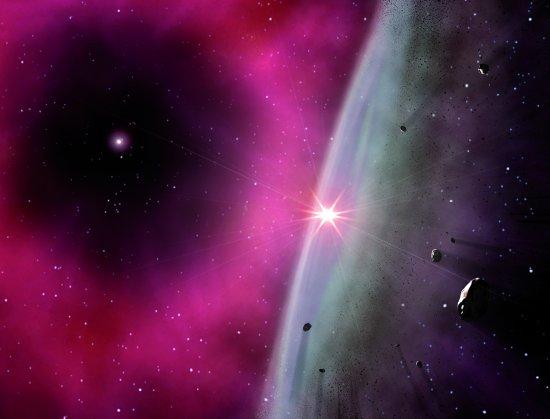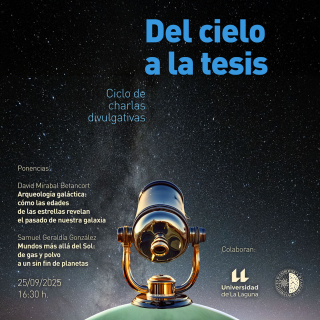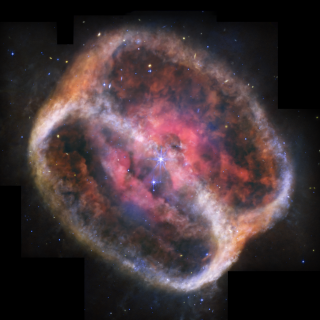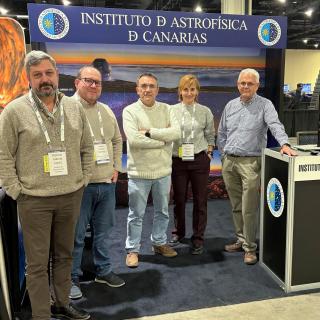- An international team led by Spanish astrophysicists has discovered that the origin of some of the radioactive elements found in the most primitive meteorites, whose origin dates back to the time of the formation of the Solar System, could have originated from a star six times the mass of the Sun and undergoing the final stage of its life as it passed through the solar neighbourhood.
The mystery concerning the origin of the radioactive components found in the most primitive meteorites, those dating back to the formation of our Solar System, now seems to have a new explanation. An international team of astrophysicists, led by Spanish researchers, has reached the conclusion that these radioactive isotopes could originate from an old star, six times the mass of the Sun, in the final stages of its life. These elements could have played an essential role in the evolution of the first building blocks of the rocky planets of the Solar System.
Since its discovery in the sixties, the origin of the radioactive elements
that constituted the first solid matter that formed the meteorites has been a much-debated subject among astronomers. The most primitive meteorites have preserved in their interiors these primordial materials, given that they come from small asteroids that never reached the stage of being converted into planets. They are therefore the only tangible evidence for the origin of the Solar System. Until now, it had beenthought that these radioactive nuclei, especially aluminium (26Al) and iron (60Fe), might have come from a nearby supernova that had ispersed these elements at the moment of its explosion, although this theory does not seem to fit entirely with the observations. According to Josep M. Trigo, a researcher at CSIC and the Instituto de Estudios Espaciales de Cataluña (Catalonian Institute of Space Studies), “this new study provides the first astrophysical model that reproduces the abundances of these elements in the first meteorites, called chondrites, without the need to invoke the presence of a supernova in the solar neighbourhood during the initial moments of the formation of the Solar System.”
Instead, the results obtained by the new study suggest that an old
nearby star, six times the mass of the Sun, much less energetic and massive than a supernova, would have sufficed to provide the first radioactive nuclei retained in primitive meteorites. “Thanks to this work, it has been shown that the proportion of radioactive isotopes estimated in our models of a star of six solar masses coincides with that measured in primitive meteorites,” says Anibal García Hernández,
a researcher at the Instituto de Astrofísica de Canarias (IAC).
Planet formation
In general, stars bigger than the Sun burn heavier elements, from hydrogen to iron, in their interior as they age. In this process the
stars maintain their size and some become red giants (stars on the “asymptotic giant branch”, or AGB), while others, the more massive ones, more than eight times the mass of the Sun,will end their lives by exploding as supernovae. Both types of stars become unstable at the end of their lives, until, in their final pulsations, they expel the outermost layers of their atmosphere into space. These residues are the bricks with which new generations of stars and planets are built.
According to this study, the radioactive elements synthesized in the interior of nearby red-giant stars. with masses approximately six times that of the Sun, would have participated by enriching the nebula from which the Solar System formed, without the need for contributions from more massive stars, which would have produced supernovae, as was thought until now to be the case.
The disintegration of these isotopes in the interior of the first bodies or protoplanets would be responsible for the internal heating that helped the first minerals to melt and recrystalize in order to form the rocky planets and large asteroids. “The study shows that, in this way, the abundances of the main radioactive nuclei measured in meteorites would
be perfectly consistent with those produced by these types of stars,” says Arturo Manchado, IAC researcher.
The following researchers participated in the study, which has just been published in the specialized journal Meteoritics and Planetary Science: Josep M. Trigo, of the Instituto de Ciencias del Espacio (CSIC-IEEC), Aníbal García Hernández and Arturo Manchado, of Instituto de Astrofísica de Canarias, Pedro García Lario of the European Space Astronomy Centre (ESAC), Madrid, María Lugaro and Mark van Raai of the University of Utrecht, together with Amanda Karakas of Mount Stromlo Observatory, Australia.



